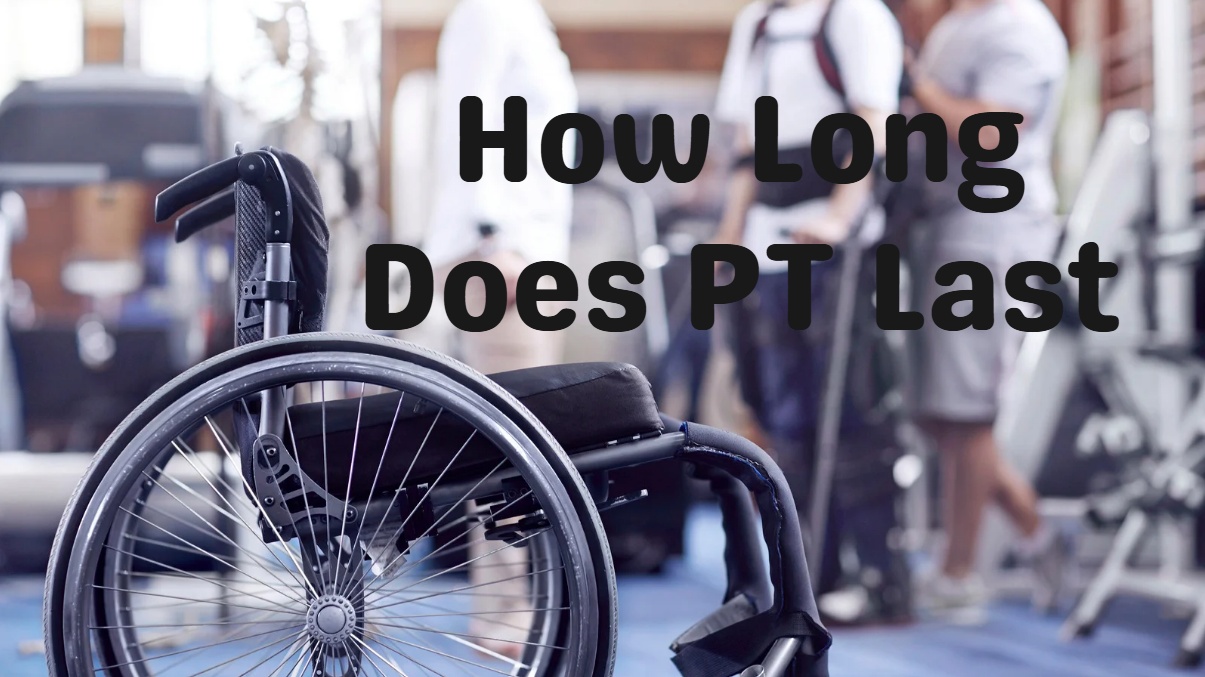When people are referred to physical therapy (PT), one of the first questions they ask is, “how long does PT last?” It’s an important concern—time is valuable, and recovery often feels urgent. According to the team at Genezen Home Health Care, led by an experienced physical therapist, this question comes up with nearly every patient. The reality is that PT doesn’t follow a one-size-fits-all schedule. The duration depends on the individual’s condition, consistency, and personal goals.
This guide from Genezen Home Health Care explains what truly determines how long PT lasts, what patients can do to achieve better results, and how to make every session count. Whether you’re recovering from surgery, managing chronic pain, or working to rebuild strength after an injury, the ultimate goal is clear: to heal effectively, avoid setbacks, and return to a more active, pain-free life.
How Long Does PT Last?

Physical therapy is not a one-size-fits-all process. The duration of treatment varies widely because every body heals differently. Here are the major factors that influence how long you may need PT:
1. Type and severity of your condition
- A mild ankle sprain may resolve in just a few weeks.
- A total knee replacement or rotator cuff repair often requires 8–12 weeks or more of structured therapy.
- Neurological conditions like stroke recovery may require long-term therapy or ongoing maintenance.
2. Your overall health and age
- Younger patients often recover faster, but not always—underlying conditions, circulation, and muscle mass play major roles.
- Chronic illnesses (like diabetes or arthritis) can slow the healing process.
3. Frequency of sessions
- Patients who attend sessions consistently—whether in a clinic or through in-home therapy—tend to recover faster than those who miss appointments or space them out too far.
4. Adherence to home exercises
- Physical therapy doesn’t end when you leave the clinic.
- If you skip your home exercise program, your progress may plateau or even regress.
5. Your body’s response to treatment
- Some people respond quickly to manual therapy, stretching, and strengthening.
- Others may need modifications, more gradual progressions, or additional interventions to see results.
Common misconception: Many people believe that “more sessions mean faster healing.” In reality, quality and consistency matter more than simply increasing the number of visits per week.
Typical Timelines for Different Conditions

While every case is unique, there are some general recovery timelines that can help you understand what to expect. These aren’t rigid deadlines—they’re averages drawn from clinical experience:
- Post-surgical rehabilitation (knee replacement, hip replacement, rotator cuff repair): usually 8–12 weeks, with some patients needing up to 6 months for full strength and mobility.
- Sports injuries (sprains, strains, ACL tears): recovery can range from 4–8 weeks for minor injuries to 6 months or longer for major repairs.
- Neurological conditions (stroke, Parkinson’s): therapy may be ongoing to maintain mobility, balance, and quality of life.
- Chronic pain or arthritis management: therapy may shift from an “intensive rehab phase” to long-term maintenance exercises rather than ending abruptly.
- Pediatric vs. adult therapy: Children often recover faster physically but require structured guidance and family involvement to stay on track.
How to Make the Most of Every Physical Therapy Session

You’re investing time and energy into physical therapy—so how do you ensure it pays off? Here are proven strategies to maximize every visit:
1. Arrive Prepared
Wear comfortable clothes that allow easy movement. If you use a brace, walker, or assistive device, bring it. If you’ve noticed changes in your pain or mobility, jot them down so you can share them clearly with your therapist.
2. Communicate Openly
Tell your therapist exactly how you’re feeling. Don’t downplay pain or stiffness, and don’t hesitate to speak up if an exercise feels confusing. Your therapist can only adjust your plan if they know what’s happening.
3. Stay Consistent
Skipping sessions—even just a few—can set back progress. Think of physical therapy as a sequence where each step builds on the last. Missing steps makes it harder to move forward.
4. Focus on Quality, not Speed
Rushing through exercises with poor form leads to less effective results and sometimes new injuries. Listen to your therapist’s cues and prioritize proper movement patterns.
5. Build a Partnership with Your Therapist
PT isn’t something done to you—it’s something done with you. Ask why certain exercises are prescribed, understand how they help, and be part of the decision-making process when goals or routines need adjusting.
6. Track Your Progress
Keep a simple journal or use a therapy app to note improvements—less pain, better balance, more strength. Seeing progress, even in small increments, can boost motivation.
7. Explore Tools and Technology
Ask your therapist about resistance bands, balance tools, therapy balls, or mobile apps that can help you continue your work between visits. Telehealth check-ins are also an option if attending every appointment in person is challenging.
What You Do Outside the Clinic Matters Most

One of the biggest secrets in physical therapy is this: recovery happens as much at home as it does in your therapy sessions. The exercises, habits, and lifestyle choices made between appointments play a major role in how quickly and completely a patient heals, often influencing the overall length of treatment. Staying committed outside the clinic is just as important as showing up to every appointment.
1. Follow Your Home Exercise Program Faithfully
These exercises aren’t busywork—they’re carefully chosen to maintain and build progress between visits. Skipping them is one of the main reasons patients stay in therapy longer than necessary.
2. Make Smart Lifestyle Choices
- Maintain good posture throughout the day to avoid re-straining healing tissues.
- Use proper ergonomics if you sit at a desk or lift objects regularly.
- Stay active but avoid overdoing it—ask your therapist where to draw the line.
3. Support Your Body with Proper Nutrition, Hydration, and Sleep
Muscles and connective tissues need protein, vitamins, and adequate rest to repair themselves. Dehydration or fatigue slows healing.
4. Stay Accountable
- Set reminders on your phone for exercises.
- Involve family members or caregivers to help you stay on track.
- Schedule check-in calls or virtual visits if you need extra motivation.
5. Recognize Red Flags Early
Even when progress is steady, setbacks can occur. Being alert to warning signs helps patients avoid bigger problems and keeps recovery on track. If any of these issues appear, contact your physical therapist immediately:
- Pain that worsens instead of improving, especially sharp or stabbing pain.
- New or increasing swelling, redness, or warmth around the injured area.
- Loss of mobility or strength that feels sudden or unexplained.
- Numbness, tingling, or changes in sensation in the affected limb.
- Difficulty performing previously easy exercises or activities of daily living.
Catching these concerns early allows therapists to adjust the treatment plan quickly, preventing delays in healing or more serious complications.
When Does PT End—and What Happens Next?

Eventually, patients reach a point where their therapy goals have been met, and formal physical therapy can transition to an independent care plan. This stage isn’t about stopping progress—it’s about shifting from guided sessions to self-managed routines that maintain and build on the improvements achieved. Here’s what to expect:
1. Signs you’re ready to “graduate”:
- Pain is under control or completely resolved, allowing for normal movement without constant discomfort.
- Mobility, strength, and balance have improved significantly to the point where exercises can be performed safely without constant supervision.
- Daily tasks, work responsibilities, or athletic activities can be completed safely and confidently, without risk of re-injury or major setbacks.
- Therapist reassessment confirms goals have been met, and any remaining limitations can be addressed through a home exercise program rather than structured sessions.
2. Transition to maintenance.
Your therapist will likely provide a take-home program designed to keep you strong and prevent future injury. This is especially important for patients with chronic conditions.
3. Periodic reassessments.
Even after discharge, a check-in every few months ensures your progress sticks and any small issues get caught before they grow.
4. Understanding “discharge” vs. “transition.”
Being discharged from therapy doesn’t mean your healing stops. It means you’ve gained the tools to continue strengthening and protecting your body independently.
Final Thoughts: Healing at Your Pace, With Expert Guidance
Physical therapy is not a race—it’s a guided process designed to help your body heal safely and completely. The question “How long does PT last?” doesn’t have a single answer because every person’s recovery journey is unique.
The good news is that you have more control over your timeline than you might think. By attending sessions consistently, following your home exercises, communicating openly, and supporting your body with healthy habits, you can shorten recovery time and enjoy lasting results.
At Genezen Home Health Care, our mission is to meet patients where they are—literally and figuratively. We bring professional, personalized physical therapy into your home, helping you recover comfortably while staying consistent with your care plan. With the right guidance and your active participation, PT can restore function, reduce pain, and give you confidence in your movement again. Contact us at (949) 380-6930


